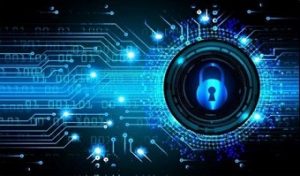
The use of biometrics is an increasingly prevalent method of security, and can come in multiple forms, such as facial, iris and DNA recognition, but the most popular design of biometric security due to its simplistic design, yet advanced security restrictions is the biometric finger scanner. Ievo explains exactly how biometric finger scanners work and why business owners should consider a biometric form of security for a top-class level of protection.
Biometric finger scanners are operated by a control board dedicated to providing a powerful, fingerprint matching system that is designed to support internal, or external fingerprint reading units. The control board acts as the main point of communication between the biometric scanner and the fingerprint, providing a highly reliable fingerprint matching system. Ievo’s control boards are designed to hold up to 50,000 fingerprint templates and can be easily amended with different components, to reflect the needs of each individual business, thanks to its sleek, manageable settings and installation process.
Once the biometric finger scanners are installed and the control board has registered all relevant personnel, entering the premises either internally or externally, the optical sensor will scan and capture a fingerprint, to either grant or deny access. The process of scanning a fingerprint varies from the model of reader, but at Ievo, the optical scanner uses both polarised and non-polarised lights to register between 1-100 reference points, building a high grade, completely accurate fingerprint image to provide an extremely precise reading.
Specific data from the fingerprint image captured is converted into a digital template which is then used for identification. These presets are unique to an individual, and each time that person enters or leaves the premises through the reader, the data is stored along with the time of capture, providing an archive of who was on the premises, where and at what time when integrated with an access control software. Unlike other standard biometric readers, no information is stored directly on an Ievo reader, instead, each template is sent back to the control board, to provide business owners with an additional level of security and protection.
Advantages of fingerprint scanners
Unlike standard security systems, Ievo argues that biometric fingerprint scanners have a number of advantages that offer a more secure system as opposed to traditional methods of security. A biometric fingerprint scanner’s sole purpose is to operate and identify personnel, through special characteristics that are unique to the individual. Security systems that use physical attributes as identification methods, such as fingerprints, are a lot more robust than traditional identification systems relying on pins and passwords, as the very nature of a fingerprint means they are completely unique to one person, making them virtually impossible to replicate and an attractive quality in high-level security environments.
Whilst fingerprints are not completely impenetrable, Ievo’s range of biometric fingerprint scanners are built with a government certified ‘Liveness Detection’ sensor to prevent any attempt of fraudulent fingerprints. This technology provides resistance to fake and spoof identification efforts by using a high-grade, multispectral imaging sensor that can detect detailed data from several layers of a spoof, indicating whether or not the fingerprint is authentic.
As well as providing top-level detection, biometric fingerprint scanners are favoured amongst ‘traditional’ methods of security due to the ease and simplicity of the system. Many systems typically replenish employee pins and passwords on a regular basis to minimise the risk of employee passwords being compromised. However, the nature of this method of security is particularly vulnerable to human error, as employees can easily misplace their pins or simply forget their passwords, which can cause complications and cost business hours in an attempt to resolve the situation.
Application specific
Whilst fingerprint scanners provide business owners with an advanced level of security, some biometric readers may not be suitable for your business. For example, if the nature of your company involves employees entering or exiting the building in conditions out of the ordinary such as harsh weather conditions, or dirty work environments with dust and debris, many biometric readers will struggle to build a quality fingerprint image, which may lead to the system not being able to identify or grant access to personnel.
The Ievo Ultimate range of biometric fingerprint scanners are suitable for both external and internal installation, are rated to industry standard 65, meaning that the devices are protected in adverse types of weather, as well as in construction environments. If your business involves dust, dirt and debris, Ievo would recommend its Ultimate fingerprint scanner as the preferred method of security, as the Ievo Ultimate features a multispectral imaging technology that is designed to provide an accurate reading of a fingerprint. Scanning both surface and subsurface levels of the skin, up to a depth of 4mm, allows the scanner to build a true digital image of the fingerprint, providing effective quality imagery in all types of fingerprint conditions and, says the company, even through latex gloves.
In a regular working environment however, the Ievo Micro reader would be the recommended product. This reader is a cost-effective, biometric product designed for typical everyday use for industries looking to secure small to medium-sized facilities. Whilst the Micro reader doesn’t feature the multispectral scanning technology for weather conditions, the Ievo Micro reader features an enhanced scanning performance. According to Ievo, compared to standard scanning readers, the Ievo Micro delivers highly enhanced features for an internal reader, providing a fast, accurate and reliable biometric security solution.











